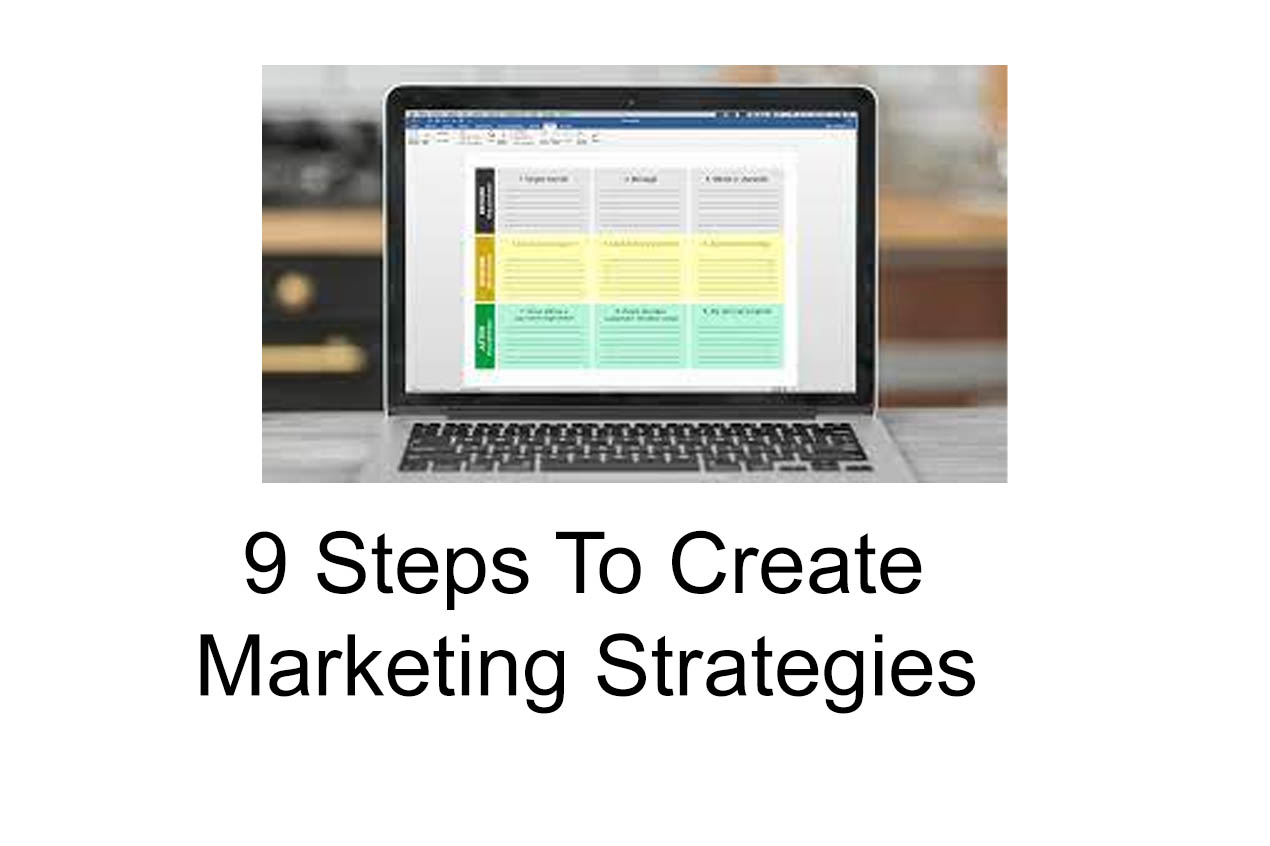
9 Steps To Create Marketing Strategies
Emily
- 0
Marketing strategies are essential for businesses to grow and reach their target audiences effectively. Creating a marketing strategy can seem overwhelming, but by breaking it down into smaller steps, it can be a manageable and productive process. Here are nine steps to create marketing strategies for your business:
- Define Your Goals: Begin by defining what you want to achieve through your marketing efforts. Is it to increase sales, generate more leads, or raise brand awareness? Having a clear goal in mind will help you create a more focused marketing strategy.
- Understand Your Target Audience: To create a marketing strategy that resonates with your audience, you need to understand who they are. Conduct research to identify your target audience’s demographics, interests, pain points, and behavior. This information will help you tailor your messaging and channels to reach and engage them effectively.
- Analyze Your Competition: Analyze your competition to understand their strengths, weaknesses, and unique selling propositions. This information will help you differentiate yourself and create a unique value proposition that resonates with your target audience.
- Identify Your USP: A Unique Selling Proposition (USP) is what sets your business apart from the competition. It’s the reason why customers should choose you over others. Identify your USP and use it to guide your messaging and communication strategy.
- Choose Your Channels: Identify the channels that your target audience uses to engage with brands. It could be social media, email, blogs, events, or other forms of marketing. Choose the channels that align with your goals and are effective in reaching your audience.
- Create a Content Strategy: Develop a content strategy that aligns with your goals and resonates with your target audience. This strategy should include the type of content you’ll create, the channels you’ll use to distribute it, and the frequency of your content.
- Develop a Messaging Framework: Develop a messaging framework that aligns with your USP, target audience, and content strategy. This messaging framework should guide all your communication efforts across channels and ensure consistency in your messaging.
- Plan and Execute: Plan and execute your marketing strategy by creating a detailed plan that outlines your tactics, timelines, and budget. Execute your plan and track your progress against your goals to make necessary adjustments along the way.
- Analyze and Optimize: Analyze the performance of your marketing strategy regularly to understand what’s working and what’s not. Use this data to optimize your strategy and make necessary adjustments to ensure that you’re meeting your goals.
- Define Your Goals: Start by identifying what you want to achieve with your marketing efforts. Are you looking to increase revenue, build brand awareness, generate leads, or launch a new product or service? Defining your goals will help you create a focused and effective marketing strategy.
- Understand Your Target Audience: Conduct research to understand your target audience’s demographics, behavior, and preferences. You can use data analytics tools, surveys, and customer feedback to gain insights into your audience. This information will help you create messaging that resonates with your audience and select the right channels to reach them.
- Analyze Your Competition: Analyzing your competition is essential to understand their strengths, weaknesses, and marketing strategies. You can conduct competitive analysis using tools such as Google Analytics, social media monitoring tools, and market research reports. This analysis will help you identify opportunities and develop a unique value proposition.
- Identify Your USP: Your Unique Selling Proposition (USP) is the unique value that you offer to your customers that sets you apart from the competition. It could be your quality, price, customer service, or other factors. Identifying your USP will help you create a messaging strategy that resonates with your audience.
- Choose Your Channels: Choose the channels that are most effective in reaching your target audience. You can use a mix of online and offline channels, including social media, email, content marketing, events, and traditional advertising. Select the channels that align with your goals and budget.
-
Create a Content Strategy: Develop a content strategy that aligns with your target audience and goals. Your content strategy should include the type of content you’ll create, the channels you’ll use to distribute it, and the frequency of your content. You can use a mix of formats, such as blog posts, videos, infographics, and social media posts.
Develop a Messaging Framework: Create a messaging framework that aligns with your USP, target audience, and content strategy. Your messaging framework should include your value proposition, brand voice, key messages, and taglines. This framework will help you create consistent and compelling messaging across all your marketing channels.
Plan and Execute: Develop a detailed marketing plan that outlines your tactics, timelines, and budget. Your marketing plan should include goals, target audience, channels, messaging, and metrics to measure success. Execute your plan and track your progress against your goals regularly.
Analyze and Optimize: Analyze the performance of your marketing strategy regularly to understand what’s working and what’s not. Use data analytics tools to measure your website traffic, leads, sales, and engagement rates. Use this data to optimize your strategy and make necessary adjustments to ensure that you’re meeting your goals.
In conclusion, creating a marketing strategy requires a systematic approach that involves defining your goals, understanding your audience, analyzing your competition, identifying your USP, selecting the right channels, creating a content strategy, developing a messaging framework, planning and executing your strategy, and analyzing and optimizing your performance. By following these steps, you can create a marketing strategy that helps you achieve your goals and grow your business.
